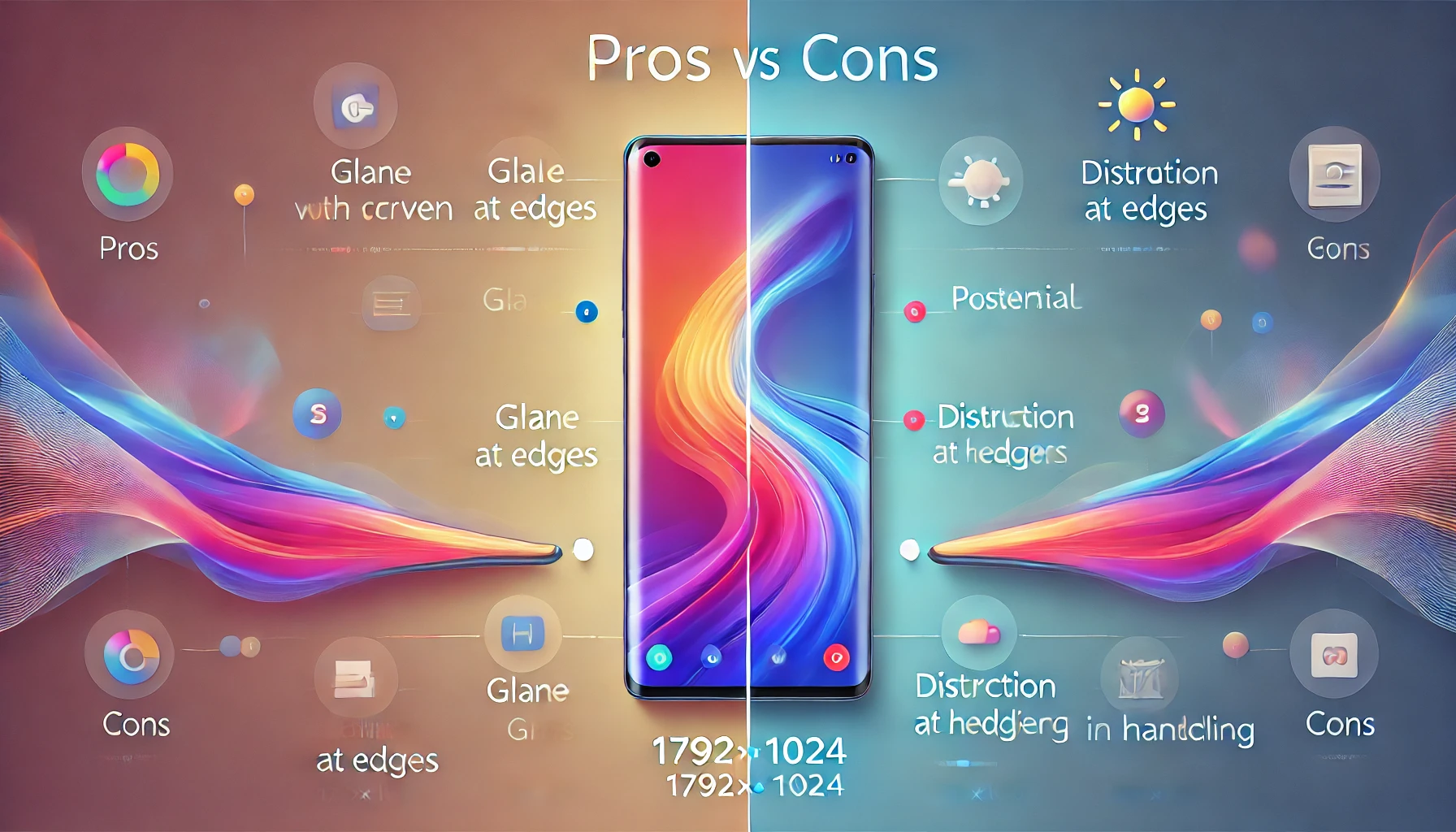In recent years, the mobile industry has witnessed numerous innovations, but none have garnered as much intrigue as the curved screen. The sleek design and futuristic appeal of curved displays have captivated consumers and tech enthusiasts alike. But beyond their striking appearance, what are the real advantages and disadvantages of curved screens? Let’s dive deep into this trend and understand the various aspects that make it both appealing and controversial.
The Appeal of Curved Screens
Visual Appeal and Aesthetic Excellence
Curved screens undeniably offer a visually stunning experience. Their unique design sets them apart from the flat screens that have dominated the market for years. The curved edges provide a sense of depth and immersion, making media consumption, such as watching videos and playing games, more engaging. The sleek and futuristic look of curved displays also appeals to those who prioritize aesthetics in their gadgets.
Enhanced Viewing Experience
One of the primary selling points of curved screens is the enhanced viewing experience they offer. The curvature is designed to match the natural curvature of the human eye, which can result in a more comfortable and immersive experience. This design can reduce distortion at the edges of the screen and provide a wider field of view, making it ideal for watching movies and playing games.
Improved Ergonomics
Curved screens can also contribute to better ergonomics. The natural curve can make swiping from one side of the screen to the other feel more natural, especially on larger devices. This can lead to a more intuitive user experience, particularly for tasks that involve extensive use of the touch screen, such as browsing the web or navigating apps.
The Drawbacks of Curved Screens
Durability Concerns
While curved screens are visually appealing, they are also more prone to damage compared to their flat counterparts. The curved edges are more susceptible to cracks and breaks if the device is dropped. Repairing a curved screen can also be more expensive and complicated due to its unique shape and design.
Screen Glare and Reflection Issues
Another significant drawback of curved screens is the increased potential for screen glare and reflections. The curvature can cause light to reflect at various angles, making it challenging to view the screen under direct sunlight or bright indoor lighting. This can be particularly frustrating for users who rely on their devices for outdoor activities or work in well-lit environments.
Limited Case and Accessory Options
Due to their unique shape, curved screens often have limited options when it comes to protective cases and accessories. Finding a case that provides adequate protection without interfering with the screen’s functionality can be challenging. Additionally, screen protectors that fit perfectly over the curved edges are harder to come by and may not offer the same level of protection as those designed for flat screens.
Higher Costs
Curved-screen devices tend to be more expensive than their flat-screen counterparts. The manufacturing process for curved displays is more complex and costly, which is reflected in the retail price. For consumers on a budget, the additional cost may not justify the aesthetic and ergonomic benefits.
Understanding the Pros and Cons of Curved Screens
When it comes to mobile displays, curved screens have certainly made a significant impact. However, it’s crucial to weigh the advantages and disadvantages of curved screens before making a purchase. On the one hand, curved screens offer a visually stunning design and an immersive viewing experience, enhancing media consumption and gaming. On the other hand, they pose durability concerns, are prone to screen glare and reflection issues, and come with higher costs and limited accessory options. By understanding these factors, consumers can make more informed decisions about whether the allure of a curved screen aligns with their practical needs and preferences.
Informative List: Key Considerations for Curved Screens
To summarize, here are the key considerations when evaluating curved screens:
- Aesthetic Appeal: Curved screens offer a sleek and futuristic design.
- Enhanced Viewing Experience: Provides a broader field of view and matches the natural curvature of the human eye.
- Ergonomics: It can improve ease of use, especially for larger devices.
- Durability: More prone to damage and expensive to repair.
- Glare and Reflections: Increased potential for glare and reflections under bright lighting.
- Accessory Options: Limited availability of protective cases and screen protectors.
- Cost: Generally more expensive due to complex manufacturing processes.
Making the Decision
Ultimately, the decision to opt for a curved screen device boils down to individual preferences and priorities. If you value aesthetic appeal and an immersive viewing experience and are willing to invest in a more expensive device with potentially higher repair costs, a curved screen might be the perfect fit for you. However, if durability, screen usability in various lighting conditions, and cost are more critical factors, you might find that a traditional flat screen better suits your needs.
Conclusion
Curved screens are a fascinating development in the mobile industry, offering both unique benefits and notable drawbacks. As with any technological innovation, it is essential to consider both the pros and cons before making a decision. By understanding the critical aspects of curved screens, you can make an informed choice that aligns with your preferences and lifestyle. Whether you prioritize aesthetics and an enhanced viewing experience or durability and practicality, being aware of these factors will help you navigate the ever-evolving landscape of mobile technology.
In the end, curved screens represent a blend of form and function, pushing the boundaries of what mobile displays can offer. As technology continues to advance, it will be exciting to see how curved screens evolve and how they will shape the future of mobile devices. For now, being informed and mindful of your needs will ensure that you make the best choice for your next mobile device.

